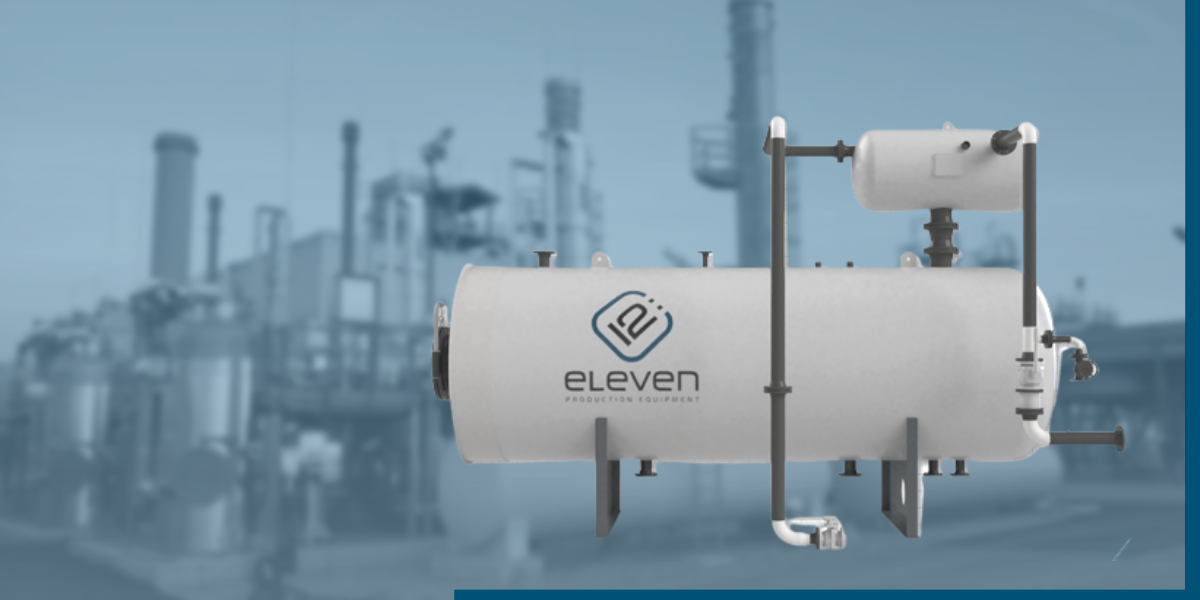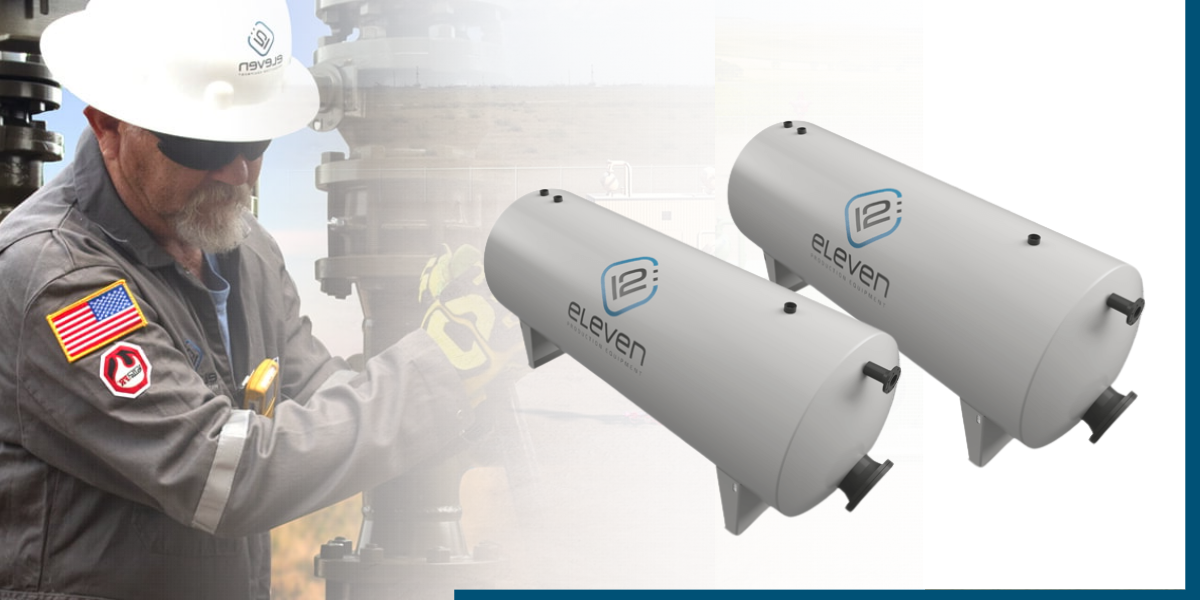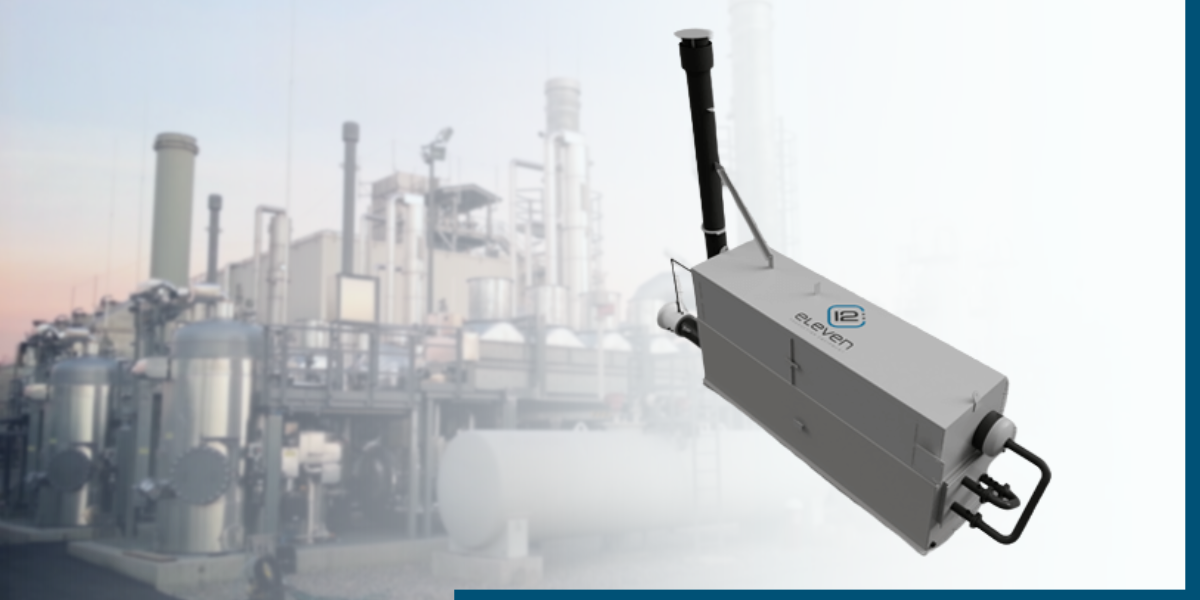Free Water Knockout (FWKO): What You Need To Know
Free water knockouts (FWKO) are an essential component in the oil and gas industry, designed to remove any free water present in the production...
4 min read
12:Eleven Team April 18, 2023

The oil and gas industry is an essential component of the global economy, and effective extraction and processing methods are key to maintaining its viability. Among the most important of these methods is the use of oil and gas production separators, which serve to separate oil, gas, and water for improved efficiency, reduced environmental impact, and increased product quality.
In this comprehensive guide, we will explore the intricacies of oil and gas separators, delving into their purpose, function, and advantages.

Oil and gas separation is a crucial step in the extraction and processing of hydrocarbon resources, as crude oil in its natural state often contains water, gas, and other impurities (AONG Website, n.d.). The process of separating these components is essential for ensuring the quality and safety of the end product, maximizing production efficiency, and minimizing the environmental impact of the industry.
Oil and gas production separators are mechanical devices specifically designed to divide oil, gas, and water from a single stream into separate components. They come in a variety of sizes and configurations, including two-phase (oil and gas) and three-phase (oil, gas, and water) models (Croft Systems, n.d.). By removing excess water and gas from the extracted oil, separators ensure that the end product is of higher quality and ready for further processing.
Oil and gas separators operate by capitalizing on the differences in the physical properties of oil, gas, and water, such as density and viscosity. These properties naturally lead to the separation of the components when subjected to gravitational forces (Engineer's Guide, 2021).
The separation process typically involves several stages:
The mixed fluid stream enters the separator through an inlet device, which helps to evenly distribute the flow across the separation chamber.
Within the separation chamber, the mixture is subjected to gravitational forces, causing the heavier water to settle at the bottom, the lighter oil to float on top, and the gas to rise above the liquid layers.
The separated components are then collected in designated compartments within the separator, from which they can be extracted for further processing or disposal.
There are several types of oil and gas separators used in the industry, each catering to specific needs and applications.
Some of the most common types include:
These separators are designed with a horizontal orientation, making them ideal for handling larger volumes of liquid and gas. They are typically used for three-phase separation (Lemmens, 2018).
With a vertical orientation, these separators are better suited for smaller volumes of liquid and gas. They are often used for two-phase separation, but can also be used for three-phase separation in certain situations (Lemmens, 2018).
As the name suggests, these separators have a spherical shape and are ideal for high-pressure applications due to their increased structural integrity (Petropedia, n.d.).
These separators are designed to handle large volumes of liquid and gas simultaneously, making them ideal for slug flow applications (Schlumberger, n.d.).
Employing oil and gas production separators offers a range of benefits, including:
Separators maximize production efficiency by ensuring that each component—oil, gas, and water—is processed and utilized in the most appropriate manner.
Removing water and other impurities from crude oil reduces the likelihood of corrosion and wear on downstream equipment, prolonging its operational lifespan.
Separators play a crucial role in improving the quality of the end product by removing excess water and impurities, ultimately resulting in a cleaner, more valuable product.
By effectively separating and managing water and other waste products, separators help to minimize the environmental impact of oil and gas production activities.
Proper maintenance and troubleshooting are crucial for ensuring the optimal performance and longevity of oil and gas separators. Regular inspections, cleaning, and replacement of worn parts can help prevent issues and prolong the life of the equipment.
Common issues that may arise in separators include:
Excessive agitation can lead to the formation of foam, which can impede the separation process. Using foam inhibitors and adjusting operating parameters can help mitigate this issue (Rajan, 2019).
The presence of certain impurities in the feed stream can result in the formation of emulsions, which can be challenging to separate. Chemical demulsifiers can help break down these emulsions and improve separation efficiency (Rajan, 2019).
Incomplete separation can lead to carryover, where some components of the feed stream are not properly separated. Adjusting operating parameters, such as flow rate and temperature, can help address this issue (Rajan, 2019).
Discover the strengths that the 12:eleven specialists in innovation and customization bring to production and process equipment. Contact 12:eleven and experience quality that is reliable, efficiency that is proven and service that is unsurpassed.
Recognized nationwide for quality and performance, our separators help improve and accelerate sustainable production with more efficiency than ever.
We invite you to request a quote for our products or services.
AONG Website. (n.d.). Oil and Gas Separator. Retrieved from https://www.arab-oil-naturalgas.com/oil-gas-separator/
Cheremisinoff, N. P. (2015). Handbook of Petroleum Processing. Springer International Publishing.
Croft Systems. (n.d.). Production Separators. Retrieved from https://www.croftsystems.net/oil-gas-equipment/production-separators
Engineer's Guide. (2021). Separator (Oil Production). Retrieved from https://www.engineersguideusa.com/separator-oil-production
Gomez, E. (2021). Innovations in Oil and Gas Separation. Oil and Gas Separator Technologies. Retrieved from https://www.oilandgasseparatortechnologies.com/innovations-in-oil-and-gas-separation
Lemmens, R. (2018). Separators - Sizing, Operation, and Troubleshooting. Retrieved from https://www.linkedin.com/pulse/separators
What Are The Different Types of Oil and Gas Separators? - What an oil and gas separator is, how they work, and all of the different types of separators that are currently being used in the field today.
What Are the Principles of Oil and Gas Separation? - Discover everything you need to know about the upstream oil and gas separation process
The Importance of ESG in the Oil and Gas Industry - Let's take a closer look at ESG in the oil and gas industry, and discuss how recent orders by the Biden administration have affected the scene.
Oil and Gas Production and Process Equipment - In this blog post we will dive into the most important pieces of oil and gas production equipment. We will also talk about how to maintain them properly.
As a specialty company providing custom design, engineering and fabrication of production and process equipment, we are dedicated to doing what’s right for our customers and passionate about creating value on every project.
We leverage the field expertise of our design and engineering group together with our diversified manufacturing capabilities to deliver a broad range of innovative surface production equipment - including Separators, Treaters, Free Water Knock Outs, Bulk and Test Packages, Indirect Line Heaters, Gas Production Units, Gas Dehydration Units, Glycol Contact Towers, Vapor Recovery Towers, Oil Stabilizing Towers.

Free water knockouts (FWKO) are an essential component in the oil and gas industry, designed to remove any free water present in the production...

Gas Production Units (GPUs) are a crucial component of the oil and gas industry. They play a significant role in the extraction, processing, and...

Piping modules and spools are an important part of any piping system. They help to keep the fluid in the system moving by providing a path for it to...